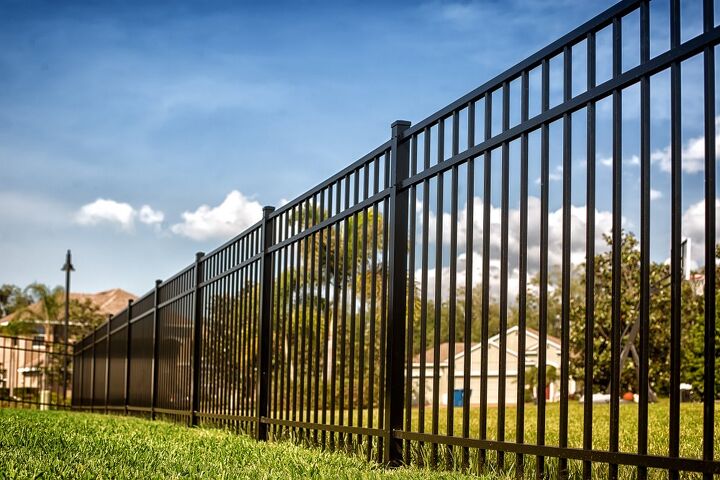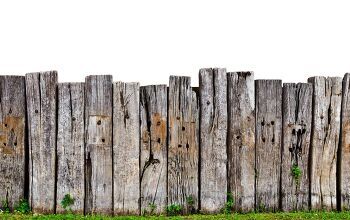Metal Vs. Wood Fence Posts: Which One Is Better?

If you’re building or replacing a fence, then you’ll want to choose materials that are built to last! Metal and wood are the two most common options for fence posts. But which is the better choice, and which has the best value?
Metal fence posts are the best choice because they’re much more durable and low-maintenance than wood fence posts. They have a longer lifespan, can stand up to the elements, and are much stronger than wood fence posts. If you’re choosing between metal and wood fence posts, metal is the best choice with the most overall value.
Wood fence posts generally aren’t strong enough to stand up to the elements, especially over long periods of time. They need maintenance every few years and are susceptible to rot, mildew, termites, and other issues. They come with a higher lifetime cost and aren’t as durable as metal fence posts.
Do You Need Fence Installation or Repair Services?
Get free, zero-commitment quotes from pro contractors near you.

What Are Metal Fence Posts?
Metal fence posts are simply fence posts made of metal, usually aluminum or steel. While they aren’t the classic choice for fence posts, they’re quickly gaining popularity.
Pros Of Metal Fence Posts
The choice of metal fence posts comes with numerous advantages. First and foremost, metal fence posts are exponentially stronger than even the best-treated wood. Plus, they’re more durable and require less upkeep.
Fences built with metal posts are generally straighter and able to stand up to the wind better. The metal posts have a modern feel if left exposed, or they can be hidden for a more classic look.
Metal fence posts come with a lower lifetime cost, and under good conditions, they can last up to 70 years! Unlike wood fence posts, metal posts don’t warp or rot, so they have a longer lifespan.
Cons Of Metal Fence Posts
Of course, there are a few drawbacks to metal fence posts as well. They come with a higher cost upfront. In addition, some don’t like the appearance of a wooden fence with metal posts.
Installing Metal Fence Posts
Step 1: Purchase Materials
Of course, you’ll need to start by selecting and purchasing the metal fence posts you want to use. Calculate the number of fence posts you’ll need based on the length of your fence and the space between posts. Remember that the posts should be at least two feet taller than the fence.
Step 2: Mark The Fence Location
Check the property line, look into any legal setbacks, and have your utility company mark any underground pipes. Then you’re ready to mark the areas where the posts will go using spray paint. Space your fence posts evenly; a distance of between six and eight feet is best.
Step 3: Dig The Holes
Use a post-hole digger to dig a hole for each of the metal posts. Keep in mind that the post holes should be at least one-third of the height of the fence. Fill each hole about two-thirds of the way with gravel.
Step 4: Insert The Posts
Insert a metal post into each hole, pushing it down so that it is surrounded by gravel. Use a level to check that each post is level and plumb (perfectly vertical).
Step 5: Add Concrete
Mix quick-set concrete with water and pour it into the holes. Allow it to cure completely before moving on.
Step 6: Add Additional Support
To make the difference between a shaky and a strong fencing system, you can enhance the post supports. In order to do this, you’ll want to use stakes or wires to anchor the posts in place.
What Are Wood Fence Posts?
Wood fence posts are usually made from pine, redwood, or cedar. Before 2003, they were treated with chromated copper arsenate. This acted as a preservative and pesticide and dramatically prolonged the life of the wood fence posts.
However, chromate copper arsenate was banned in 2003 because it came with the risk of arsenic exposure. Since then, wood treatment has become much less effective. Nowadays, the life expectancy of traditional wood fence posts is much lower.
Pros of Wood Fence Posts
One of the benefits of using wood fence posts is that you’ll have an aesthetically pleasing, classic-looking fence. Wood tends to be easier to work with than metal, and it comes at a lower cost upfront. It is associated with warmth, charm, and natural beauty.
Cons of Wood Fence Posts
There are a few downsides to choosing wood posts for your fence as well. In comparison to metal fence posts, they’re just not as durable. They also require much more maintenance.
Wood fence posts are vulnerable to mildew, insect damage, and rot. The ongoing costs are high, although the initial cost is relatively low.
As time goes on, wood fence posts are weakened by the elements and become less secure. This leaves your fence susceptible to falling apart when heavy winds hit. In addition, a weakened wooden fence is easier to break through.
Installing Wood Fence Posts
Step 1: Purchase Materials
Start by determining the size of your fence and how far apart the fence posts will be. When choosing your wood fence posts, remember that they should be at least two feet taller than your fence. Select fence posts that have been treated to endure moisture and inclement weather.
Step 2: Mark The Fence Location
Contact your local utility company so that they can mark any underground wires or pipes. You’ll also need to look into any legal setbacks and double-check the location of the property line. Then you can use spray paint to mark the location of each fence post.
Step 3: Install The Corner Posts
Use a post-hole digger to dig the holes for your corner posts. Each post hole should be at least one-third as deep as the fence is tall. Add a few inches of gravel to each corner post hole before setting the post inside.
Next, use a level to ensure that the post is plumb and brace it with pieces of scrap lumber. Stick one end of the scrap lumber into the ground and nail the other end to the post.
Step 4: Add Concrete
Following the directions on the bag, mix quick-set concrete with water and pour it into the corner post holes. You can use a shovel or even a stick to release any air bubbles. Double-check that the post is still level and plumb.
Step 5: Set A String Line
Run a taut string line from one corner post to the other. This will help you install the other posts at a uniform height.
Step 6: Install The Other Posts
Follow the same process that you used for the corner posts to install the rest of the fence posts. Allow the concrete sufficient time to cure before continuing to build the fence.
Metal vs. Wood Fence Posts: Evaluation Criteria
Let’s make a direct comparison of metal and wood fence posts to see which is the best choice for you.
Appearance
Appearance is subjective, of course, and some people prefer the classic look of wood. Meanwhile, others find the modern aesthetic of metal to be more appealing. It really comes down to your own personal preferences.
However, it’s worth noting that metal fence posts can be hidden if you don’t like their appearance. It may cost a bit more to build your fence in a way that they’re hidden, but it is an option.
Cost
When it comes to initial costs, wood fence posts are much cheaper than metal fence posts. Metal is more expensive as a raw material, and professionals charge more to work with it. But to get a full understanding of the costs, you have to look at the lifetime of the fence.
When you consider maintenance, repairs, and other long-term expenses, wood posts are actually more expensive. Metal fence posts don’t require much maintenance and aren’t at risk of rot or mildew. Although they come at a higher price initially, they will cost less throughout the fence’s lifetime.
Durability
As mentioned previously, wood fence posts have been significantly weaker since the ban of chromated copper arsenate in 2003. Unfortunately, they’re not very durable nowadays. Wood fence posts can’t always handle heavy winds, rain, and other inclement weather.
As moisture levels change, wood fence posts expand and contract. This results in warped posts that are unsightly and can take years off the lifespan of the fence. And if your fence is attacked by termites, you’ll only be left with bits of brittle wood.
Metal fence posts, on the other hand, are not affected by termites or natural elements. It should be noted that steel can rust, but galvanized steel does not. Metal fence posts are generally considered much more durable than wood fence posts.
Maintenance
To maintain wood fence posts, you should clean and recoat the wood every two to three years. Most people skip this important maintenance, and their fence has a shorter lifespan as a result. You may also need to restrain the wood every few years.
For metal fences, there is no maintenance required aside from occasional cleanup of dirt or residue from lawn chemicals.
Related Questions
Are metal fence posts galvanized?
Metal fence posts are usually either painted or galvanized. Galvanized metal doesn’t rust and is a great choice for your fence.
How far apart are wood fence posts?
Wood fence posts are generally spaced about six to eight feet apart.
What are wood fence posts made of?
Wood fence posts are most commonly made of pine. A few other options are redwood, cedar, and sweetgum.
Do You Need Fence Installation or Repair Services?
Get free, zero-commitment quotes from pro contractors near you.

Metal vs. Wood Fence Posts: The Final Verdict
When choosing between metal and wood fence posts, metal posts should always be your first choice. They’re extremely strong, durable, and low-maintenance. Although they come with a higher cost upfront, they provide more bang for their buck in the long term.
Related Articles

With a lifelong passion for writing plus strong enthusiasm for home improvement and DIY projects, joining the team at Upgraded Home was an easy choice. Jessica Allen likes to share helpful information with current and aspiring homeowners. Aside from writing, Jessica loves doing yoga, playing the piano, and dabbling in graphic design.
More by Jessica Allen



























